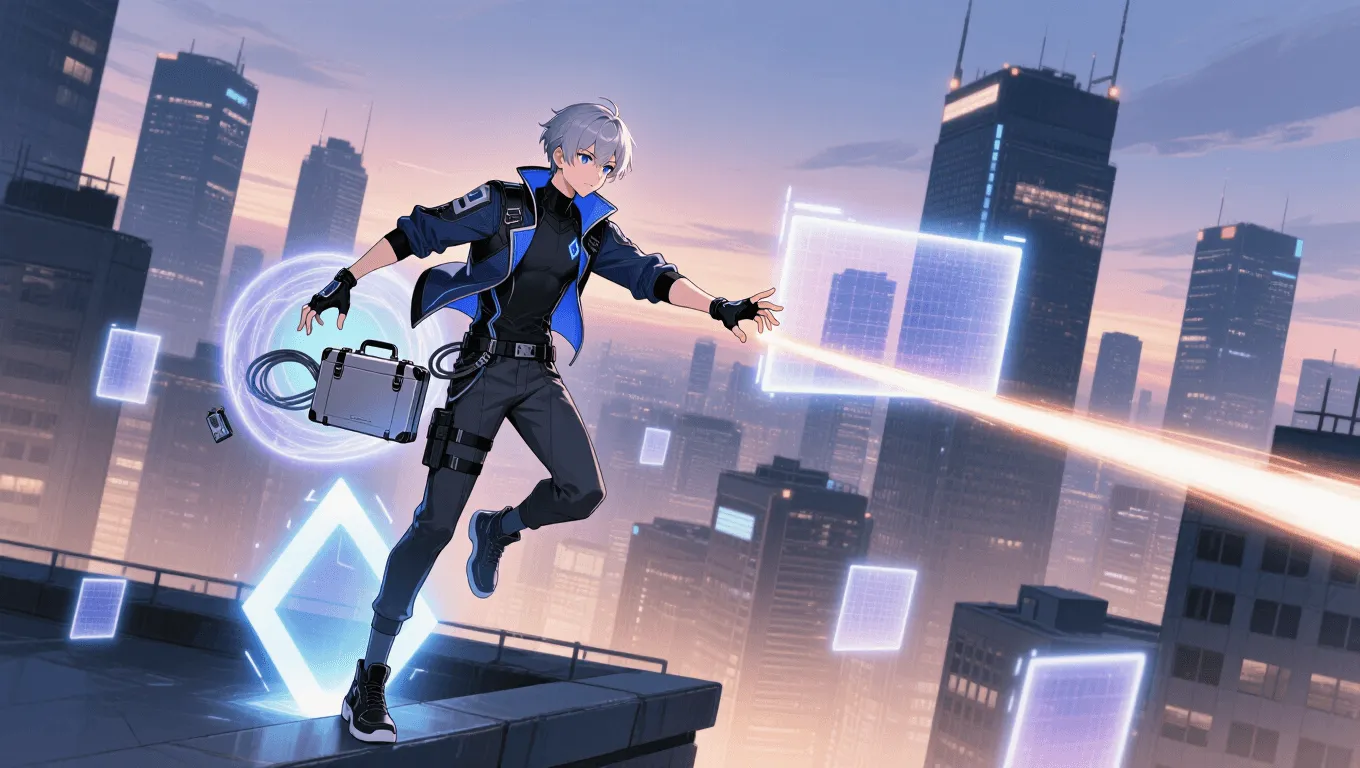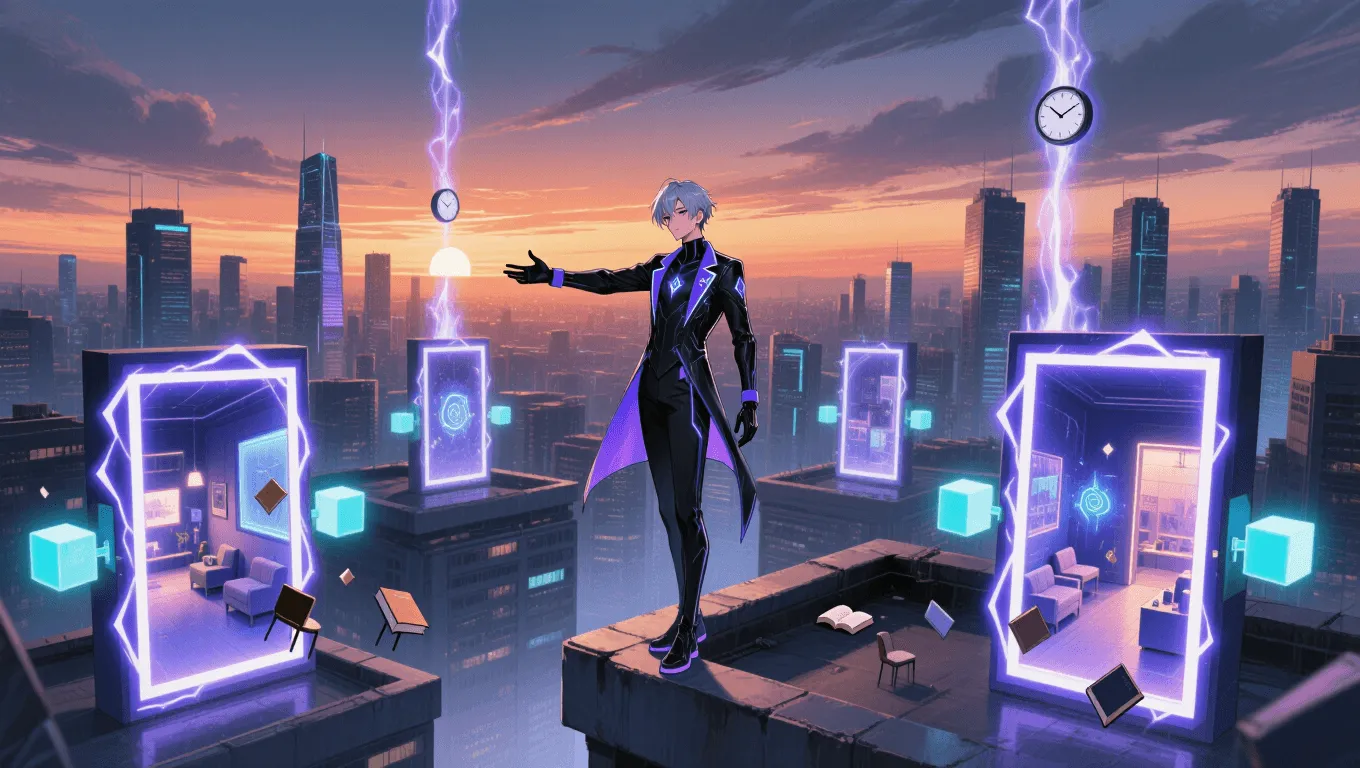Dimensional Manipulation

Dimensional Manipulation Video Demo 🎬
Table of Contents
- Dimensional Manipulation Video Demo 🎬
- What Is Dimensional Manipulation
- Core Abilities of Dimensional Manipulation
- Application / Tactical Advantages in Combat
- Level: Level 1 🏙️, Level 2 🌇, Level 3 🌃
- Limitations of Using the Dimensional Manipulation
- Weakness Against What Other Superpowers
- Synergistic Power Combos
- Known Users
Dimensional Manipulation is the ability to perceive, access, and alter multiple dimensions of space, time, and reality. Characters with this superpower bend the rules of the universe—opening portals, creating pocket dimensions, or rewriting spatial relationships to control the battlefield. In fiction and tabletop role-playing, it’s often paired with reality warping, teleportation, and temporal effects. Fans exploring related abilities can browse the full catalog on the superpower wiki or roll for inspiration with our random superpower generator.
What Is Dimensional Manipulation
Dimensional Manipulation refers to the control of higher-dimensional frameworks beyond the familiar three dimensions of space and one of time. Users can sense and interact with the “layers” of the multiverse—parallel worlds, branes, and alternate timelines—using those layers as tools. At basic levels, the power looks like portal creation or short-range folding of space. At advanced tiers, it becomes architectural: crafting pocket universes, anchoring reality to prevent intrusions, or collapsing hostile spaces into null-zones.
Common associated terms include interdimensional travel, wormholes, spatial folding, dimensional phasing, cross-dimensional communication, and brane manipulation. While often conflated with pure teleportation or time travel, this power is broader: it describes control over the structure that makes teleportation and time travel possible.
Core Abilities of Dimensional Manipulation
Spatial Folding & Portal Creation
Users bend space so two distant points touch, stepping through a door, rip, or ring of light. Unlike standard teleportation, portals can be shared with allies, sustained for logistics, or positioned to redirect projectiles and energy beams.
Pocket Dimension Crafting
The user constructs a self-contained micro-reality—an armory, safehouse, prison, or training ground. These spaces can pause or dilate time, alter physics, or filter who can enter using dimensional keys or signatures.
Dimensional Phasing
By partially shifting out of the host reality, a user can pass through walls, evade grabs, or ignore environmental hazards. Phasing also allows “ghosting” around force fields that don’t cover higher-dimensional axes.
Reality Anchoring (Dimensional Anchors)
To counter other manipulators, the user can pin local reality with anchors that stabilize space-time. Anchors disrupt enemy portals, shut down phasing, and prevent banishment effects.
Interdimensional Sensing
This includes detecting rifts, weak points, null-space pockets, or dimensional parasites. At higher levels, the user can map multiversal topology—locating safe routes through chaotic hyperspace.
Banishment & Containment
With a precise tear, enemies can be ejected into stasis pockets, maze-realms, or void layers. This is the inverse of portal creation, tuned for removal rather than transit.
Temporal-Adjacent Effects
Though not full time travel, dimensional control brushes time: localized dilation, rewind buffers tied to pocket dimensions, or temporal “lag” applied to objects passing through gateways.
Application / Tactical Advantages in Combat
-
Battlefield Control: Portals change approach angles instantly, enable flanking, and invalidate chokepoints. A shield wall becomes meaningless when allies step through from behind.
-
Defense Through Geometry: Redirect incoming fire into empty space or loop a projectile back toward its source. A portal placed as a “mirror” can neutralize energy cones and breath weapons.
-
Mobility & Extraction: Evacuate civilians via stable gates, stage aerial insertions, or extract wounded units into a time-dilated med-bay pocket.
-
Containment & Disarm: Banish explosive devices to null-space. Trap kaiju-scale threats in slow-time vaults.
-
Stealth & Recon: Scout through micro-rifts. Phase past alarms. Open needle-sized apertures to eavesdrop across dimensions.
-
Power Routing: Funnel elemental blasts through folded space to bypass magical wards, or route loud attacks into silence pockets to avoid detection.
-
Counter-Magic: Deploy dimensional anchors to suppress enemy teleportation and sever summoning links.
Level: Level 1 🏙️, Level 2 🌇, Level 3 🌃
Level 1 🏙️ – Novice Geometer

-
Capabilities: Short-range portal creation (line-of-sight), momentary phasing, small storage pocket (closet-sized), basic rift sensing within a city block.
-
Combat Use: Quick dodges by stepping aside through micro-gates; simple flanks; redirect a single projectile; stash gear in a pocket space.
-
Tactics: Play hit-and-run. Use portals for repositioning and verticality. Avoid sustained duels with stronger dimensional defenses.
-
Risks: Portal misalignment can cause disorientation. Overuse leads to spatial nausea and impaired depth perception.
Level 2 🌇 – Architect of Spaces

-
Capabilities: Stable portals across citywide distances; multi-room pocket dimensions with adjustable gravity; phased movement through complex barriers; localized time dilation (seconds to minutes); deployable dimensional anchors.
-
Combat Use: Choke enemies into labyrinth pockets, split battlefields with one-way gates, set anchor zones to shut down teleporting foes, and chain portals for ricochet tactics.
-
Tactics: Prepare a “stage.” Seed anchors, pre-draw portal coordinates, and keep a med-bay pocket nearby.
-
Risks: Anchor failure can implode nearby rifts, causing collateral geometry shifts (stairs to nowhere, looping corridors). Ethical concerns arise when banishing sapient beings.
Level 3 🌃 – Warden of the Multiverse

-
Capabilities: Interdimensional travel across timelines and parallel worlds; megastructure pocket realms with custom physics; large-scale banishment; multiversal cartography; defensive reality weaves against foreign incursion; limited temporal rollback bound to a sanctuary dimension.
-
Combat Use: Rewrite engagement terms—fight on home turf with favorable physics, parry reality-warping with anchors, or evacuate entire populations via city-sized gates.
-
Tactics: Operate like a strategist and city-planner of realities. Manage portal economics (throughput, stability, and safety). Maintain treaties with neighboring dimensions.
-
Risks: Catastrophic failure can tear persistent wounds between worlds. Overextension invites extradimensional predators or paradox feedback.
Limitations of Using the Dimensional Manipulation
-
Energy & Focus Costs: Creating and maintaining portals or pockets drains stamina and cognitive bandwidth. Complex constructs require ritual focus or anchor arrays.
-
Topology Drift: Dimensions aren’t static. Routes shift, and safe corridors can decay. Without updated maps, travelers may emerge in hazardous strata.
-
Anchor Dependency: Anti-rift fields and dimensional anchors are powerful but brittle. If an anchor is destroyed, stored constructs may collapse.
-
Causality Safeguards: Temporal-adjacent features are throttled to avoid paradox. Many settings impose cool-downs or “chronal taxation” after rollbacks.
-
Access Permissions: Some universes are gated. Entities or laws deny entry without keys, sigils, or resonance matches.
-
Environmental Spillover: Repeated portal use leaks exotic radiation, gravity ripples, or resonance echoes that can be tracked by enemies.
-
Ethical & Legal Constraints: Banishment can be judged extrajudicial. Dimensional property rights and inter-world accords may restrict use.
Weakness Against What Other Superpowers
-
Reality Anchoring & Nullification: Anti-magic fields, dimensional dampeners, or technomantic jammers collapse rifts and block phasing.
-
Probability Manipulation: Chaos or luck powers increase portal misfires, create off-target exits, or scramble pocket stability.
-
Gravity & Spacetime Distortion: Extreme gravity manipulators can shear or lens portals, forcing them closed or into unsafe alignments.
-
Temporal Dominion: Full time controllers can outmaneuver temporal-adjacent tricks, rewinding around banishment events or preventing anchor deployment.
-
Information Warfare (Clairvoyance/Precognition): Foes who predict portal placement can counter-flank or set traps at likely egress points.
-
Severance Abilities: Powers that cut connections—like dimensional severing or wardbreaker sigils—can disable cross-realm tethers and strand travelers.
Synergistic Power Combos
-
Dimensional Manipulation + Teleportation: Teleport for personal speed; use portals for team logistics and battlefield geometry. Teleportation also recovers from portal failure.
-
Dimensional Manipulation + Gravity Control: Stabilize or curve gateways using gravity wells, enabling precision ricochet shots or orbiting portal arrays.
-
Dimensional Manipulation + Illusion Casting: Hide gates in visual decoys, turn mazes into psychological traps, and mask anchor locations.
-
Dimensional Manipulation + Energy Projection: Route beams through multi-angle portals for impossible firing lines; vent reactor heat into safe null-space.
-
Dimensional Manipulation + Summoning: Securely stage summoned allies in a waiting pocket realm and throttle their arrival via controlled valves.
-
Dimensional Manipulation + Technomancy: Build reliable anchor networks, rift monitors, and automated gate locks keyed to biometric or arcane signatures.
-
Dimensional Manipulation + Healing/Support: Maintain time-dilated clinics, accelerate recovery, and extract casualties instantly.
Known Users
-
Doctor Strange (Marvel Comics): Frequently opens gateways, erects dimensional wards, and negotiates with pocket realms during mystical crises.
-
Mister Mxyzptlk (DC Comics): A fifth-dimensional imp whose comedic reality tricks highlight the absurd power ceilings of higher-dimensional beings.
-
Scarlet Witch (Marvel Comics): Reality-bending events often involve fractures and shifts across possible worlds and branes.
-
Franklin Richards (Marvel Comics): An omega-level user who has crafted entire universes; an exemplar of pocket-dimension creation. Learn more on Franklin Richards at Marvel.
-
Raven (DC Comics): Uses portals to traverse and isolate threats, balancing emotional control with dimensional safeguards.
-
Magik (Marvel Comics): Commands stepping discs and a personal realm, combining swordplay with ruthless spatial tactics.
By mastering Dimensional Manipulation in a story or game, a character becomes a planner of spaces and a guardian of boundaries: equal parts strategist, engineer, and explorer. For a deeper dive into related abilities and counters, visit the broader superpower wiki, or if you’re designing a new character, try your luck with the random superpower generator.
